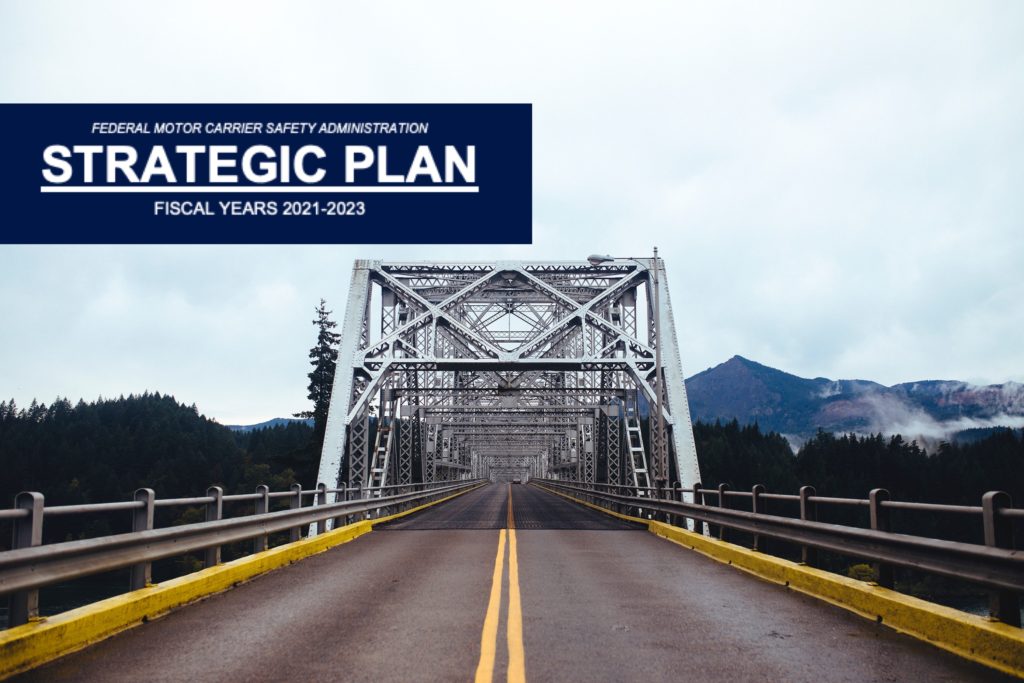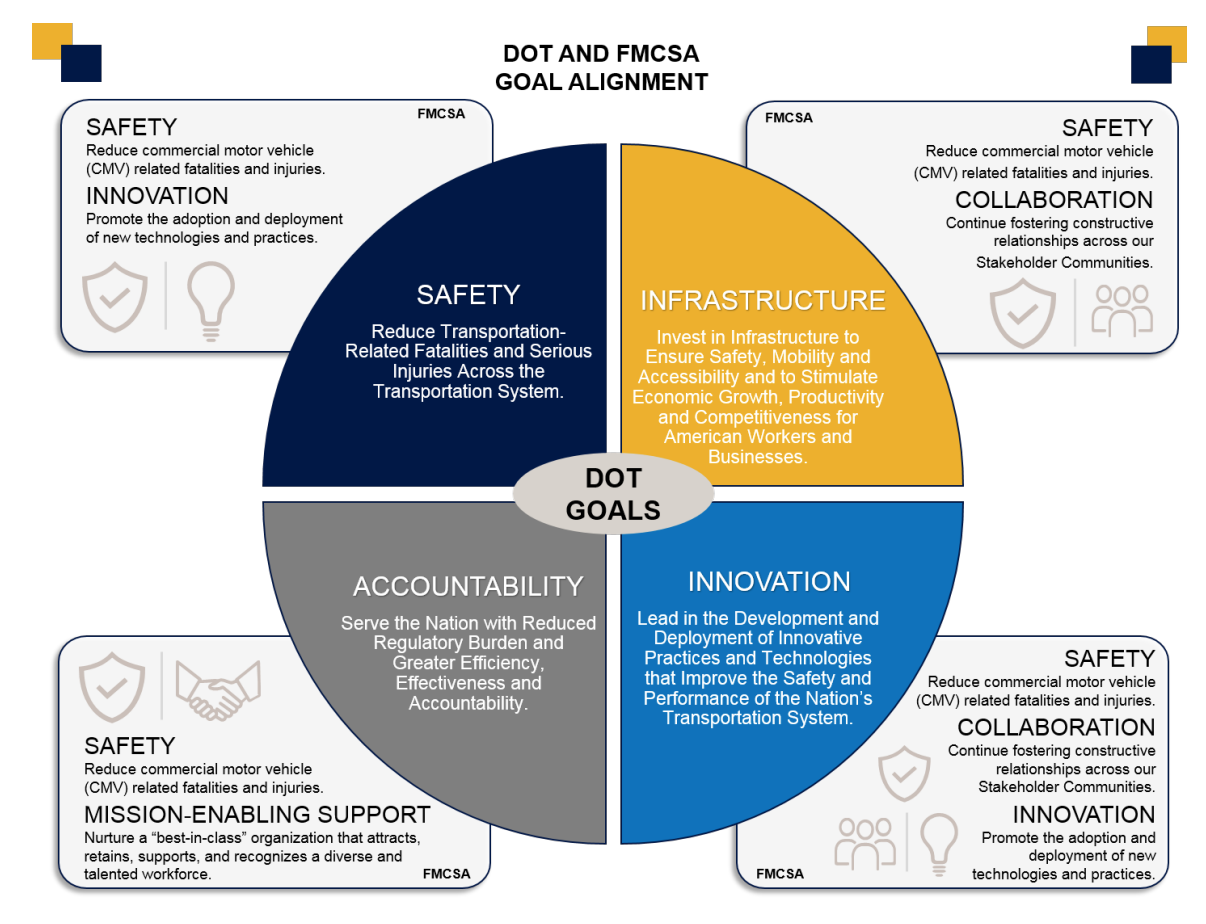With fatal truck accidents being on an uptrend in recent years, there is a lot of pressure to create systems that can reduce the overall number of accidents on our nation’s highways. The FMCSA has taken several steps to help reverse the trend but there is still a lot that could be done to reduce accidents and create safer working environments for professional drivers and everyday travelers.
The DOT has developed a variety of rules and regulations applied to all segments of the commercial vehicle industry across the U.S. through the FMCSA. They work hard to prevent crashes, injuries, and fatalities involving large trucks and buses with updated standards and more aggressive enforcement practices.
“FMCSA’s MISSION is to save lives and reduce crashes and injuries by advancing large truck and bus safety through collaboration, education, research, technology, and compliance.”
FMCSA’s Core Values Include:
- INTEGRITY: We uphold the highest standards of equality, integrity, and ethical behavior. Through our actions, we earn the respect and trust of our peers, partners, customers, and the American people.
- COLLABORATION: We work as a team, furthering our goals and strategies by valuing the commitment and contributions of our many partners and stakeholders across the broad motor carrier community to achieve mission success.
- INNOVATION: We seek new ways to accomplish our responsibilities and achieve extraordinary results by delivering innovative, forward-looking, and data-driven solutions in advancing our mission.
- EXCELLENCE: We strive for excellence by continually improving ourselves and seeking to provide the highest level of service by embracing our mission with the utmost energy and enthusiasm.
Read the full FMCSA report by clicking here.

Strategic Goals for Safety
Overview: Quality Assurance Review to evaluate whether the SPE is being implemented uniformly, and determine if processes and procedures are fair.
Objective #1: Promote a culture of CMV safety
Objective #2: Reduce the incidence of unsafe, high-risk behavior
Objective #3: Ensure only qualified drivers operate CMVs
Objective #4: Improve safety oversight efficiency and effectiveness
Objective #5: Prevent unsafe carriers from reincarnating to operate
Strategic Goals for Collaboration
Overview: Evaluate the effectiveness of MCSAP. Assess State partner performance, identify best practices, and compare performance to measurable safety goals. Focus on 49 CFR part 350 – Motor Carrier Safety Assistance Program and High Priority Program.
Objective #1: Enhance collaboration with State partners to optimize
State program delivery
Objective #2: Continuously improve collaboration with industry and
other stakeholders to advance safety culture
Objective #3: Ensure the motor carrier industry has access to
resources that improve roadway safety
Strategic Goals for Innovation
Overview: Evaluate the effectiveness of the implementation of the URS rule.
Objective #1: Facilitate the implementation of advanced driver
assistance systems (ADAS) and automated driving systems (ADS)
Objective #2: Partner with internal and external research programs
and the private sector to encourage innovation
Objective #3: Develop and implement new data collection exchanges,
techniques, and tools to enhance motor carrier safety
Objective #4: Conduct research on innovative solutions to promote
motor carrier safety effectiveness, efficiency, and competitiveness
Strategic Goals for “Mission-Enabling” Support
Overview: Evaluate the implementation of the Drug and Alcohol Clearinghouse with a focus on data reporting and stakeholder use.
Objective #1: Build a culture of organizational excellence
Objective #2: Ensure clear internal communication
Objective #3: Develop the Workforce
Objective #4: Enhance the use of Information Technology resources
Objective #5: Enhance workplace safety and efficiency for inspectors,
auditors, and investigators
Objective #6: Continue to collaborate within and among the program
offices to improve the delivery of the Agency’s programs

FMCSA Links:
Analysis and Information: https://ai.fmcsa.dot.gov/default.aspx
CDL Drug and Alcohol Clearinghouse: https://www.fmcsa.dot.gov/regulations/commercial-drivers-license-drug-and-alcohol-clearinghouse
Compliance Safety and Accountability Program: http://csa.fmcsa.dot.gov/
FMCSA Bus and Passenger Carrier Safety: https://www.fmcsa.dot.gov/safety/passenger-safety/passenger-carrier-and-bus-safety
FMCSA Grant Programs: https://www.fmcsa.dot.gov/mission/grants
FMCSA Medical Review Board: https://www.fmcsa.dot.gov/mrb
Hours of Service: https://www.fmcsa.dot.gov/regulations/hours-of-service
Household Goods Program: https://www.protectyourmove.gov/
Motor Carrier Safety Advisory Committee: https://www.fmcsa.dot.gov/advisory-committees/mcsac/welcome-fmcsa-mcsac
Motor Carrier Safety Progress Reports: https://www.fmcsa.dot.gov/safety/data-and-statistics/motor-carrier-safety-progressreports
Our Roads, Our Safety: http://www.fmcsa.dot.gov/ourroads
Have questions about FMCSA regulations and requirements? Contact us for a free consultation!


